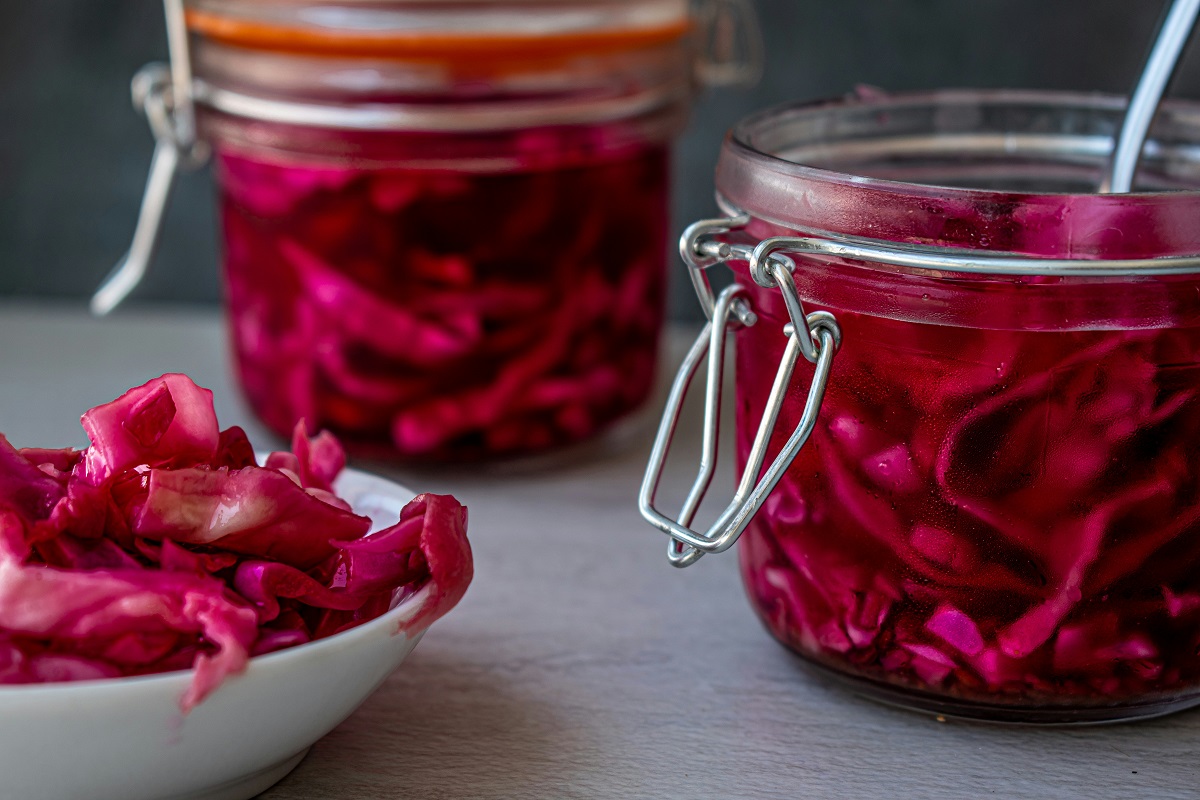
Four Types of Fermentation
While fermentation might be new to you, humans have relied on it for thousands of years. This process has provided not only the production of delectable foods and drinks but also aids in gut health promotion. That’s right, the fermentation combines good bacteria and yeast to turn a variety of foods—including yogurt, kimchi, and sauerkraut—into abundant sources of probiotics. We will be discussing four types of fermentation in this article.
The promotion of a diversified and well-balanced gut microbiota is critical for maintaining digestive health. These living bacteria play a critical role in this regard. This means that regular consumption of fermented foods can enhance immune system performance, improve gut balance, and improve nutrient absorption. All of which can have a good effect on your gastrointestinal health.
As you start your fermentation journey, it’s a good idea to learn some basics. This article will examine the four main forms of fermentation—alcoholic, lactic acid, malolactic, and acetic acid fermentation. You will also learn about their unique features, including how they support general health by helping you maintain a healthy gut.
Alcohol Fermentation
The Alcohol type uses bacteria or yeast to convert sugar to carbon dioxide and alcohol, providing us with wine, spirits, and beer. And while you might have only thought these beverages were good for relaxing after a long week at work, they also provide your digestive tract with beneficial bacteria.
A prominent feature of alcohol fermentation is the generation of polyphenols, which are substances present in a variety of fermented drinks. Antioxidant and anti-inflammatory properties are only two of the many health advantages linked to polyphenols. These substances contribute to a resilient and well-balanced gut microbiota by enhancing gut microbial diversity.
In other words, fermented alcoholic beverages also include helpful bacteria that may boost immunity as well as facilitate digestion.
Lactic Acid Fermentation
The Lactic acid type produces a wide variety of foods, such as kimchi, sauerkraut, and yogurt. It does this by converting glucose into lactic acid and introducing bacteria like Lactobacillus and Bifidobacterium to create an acidic environment that not only preserves food but also gives it a unique, tangy flavor.
Encouraging the development of good bacteria in the stomach isn’t the only benefit of eating foods high in lactic acid. Their consumption can also boost the immune system, promote nutrient absorption, and aid digestion.
In addition, consistent consumption of these foods has the potential to prevent gastrointestinal disorders, including inflammatory bowel disease (IBD) and irritable bowel syndrome (IBS). These foods’ live cultures offer a source of healthy bacteria that can colonize the intestines and support a diversified and well-balanced microbial ecosystem.
Along with alcohol fermentation, lactic acid fermentation is probably the most well-known process. However, you might not have realized that you could carry out this process in just a few steps at home.
At Stoney Creek Farm, we’d love to help you take the first steps on your fermentation journey, and you can do just that by registering for our upcoming “Fermenting Vegetables: Healthy and Delicious” class. In the class, we will talk about fermenting vegetables, how to incorporate fermented vegetables into your diet, and the many benefits they offer. Plus, this interactive class will give you the skills and confidence you need to go home and start fermenting right away.
Malolactic Fermentation
Like alcohol, the malolactic type is an important step in the wine-making process. Essentially, once the primary fermentation has occurred, lactic acid bacteria transform malic acid into lactic acid for the second part of the process.
This lowers the wine’s acidity in addition to adding lactic acid, which, as you learned above, is good for the health of the gastrointestinal tract. You might say these two processes give wine an extra jolt of health benefits, which is why many cultures drink wine as part of their daily diets.
Even better? Scientists have found a link between the anti-inflammatory properties of lactic acid bacteria that are made during malolactic fermentation and other microorganisms that might help not only gut microbiome health but also keep your immune system in check and lower inflammation.
Acetic Acid Fermentation
The fermentation of acetic acid produces vinegar. This condiment offers a wide range of culinary and medicinal uses, including benefiting intestinal health. During the fermentation process, acetic acid bacteria convert alcohol into acetic acid, which has been demonstrated to have antibacterial qualities that help regulate dangerous microorganisms in the digestive tract.
In addition, the properties of vinegar have been linked to better blood sugar control and weight management.
Fermentation and Kombucha
As mentioned, people have utilized the process of fermentation to convert unprocessed substances into a diverse range of fermented foods and drinks. The fermentation of the popular fermented drink kombucha is a prime illustration of this transformational process.
When exploring kombucha, you’ll come across the term “scoby,” which stands for “symbiotic culture of bacteria and yeast,” explaining the symbiotic interaction at the core of kombucha production.
During fermentation, the scoby—a thick, rubbery structure resembling a pancake—floats on the surface of the kombucha beverage. This living thing is the engine of the whole brewing process, combining the activities of different microorganisms to produce a unique and nuanced flavor profile. The harmonious interactions of acetic acid bacteria, lactic acid bacteria, and certain yeasts produce the magic of kombucha fermentation.
Three Components
In the early phases of fermentation, acetic acid bacteria, especially strains like Acetobacter, are essential. These microorganisms give kombucha its distinct sour flavor by converting ethanol, a byproduct of yeast fermentation, into acetic acid. This acidification extends the shelf life of the beverage by acting as a natural preservative in addition to adding to its flavor.
Lactic acid bacteria, such as Lactobacillus, simultaneously add to the overall acidity and in turn, provide a more layered flavor profile. The anaerobic environment that kombucha fermentation creates is ideal for these bacteria, which produce lactic acid as a metabolic byproduct. Kombucha is known for its unique flavor profile, which combines sour, sweet, and occasionally somewhat fizzy notes due to the presence of lactic and acetic acids.
Yeast is the third essential component of the symbiotic connection. Saccharomyces cerevisiae is one of the yeast strains that helps in fermentation by turning carbohydrates, or sugar, into carbon dioxide and alcohol. The acetic acid bacteria use the alcohol that yeast produces as a substrate to create acetic acid.
Kombucha aficionados are always discovering new possibilities by experimenting with various ingredients, brewing durations, and fermentation conditions. You can find out more about kombucha yourself by joining our upcoming “How to Make Kombucha” class. We’ll expand upon the kombucha process and talk about its health benefits, as well as provide you with the ingredients you need to brew your own kombucha at home.
A Wide Variety of Benefits
As you can see, several advantages for gut health come from the art and science of fermentation. Each form of fermentation has a distinct function in promoting the health of our gut flora, from the bubbly appeal of alcoholic fermentation to the probiotic richness of lactic acid fermentation.
Including a range of fermented foods and drinks in your diet can enhance your general health in a tasty and practical way. You can celebrate the benefits of fermentation and learn more about the process by registering for either our “Fermenting Vegetables” or “How to Make Kombucha” class.
Check out our website online to learn more about both, as well as the other classes we offer on the farm.


